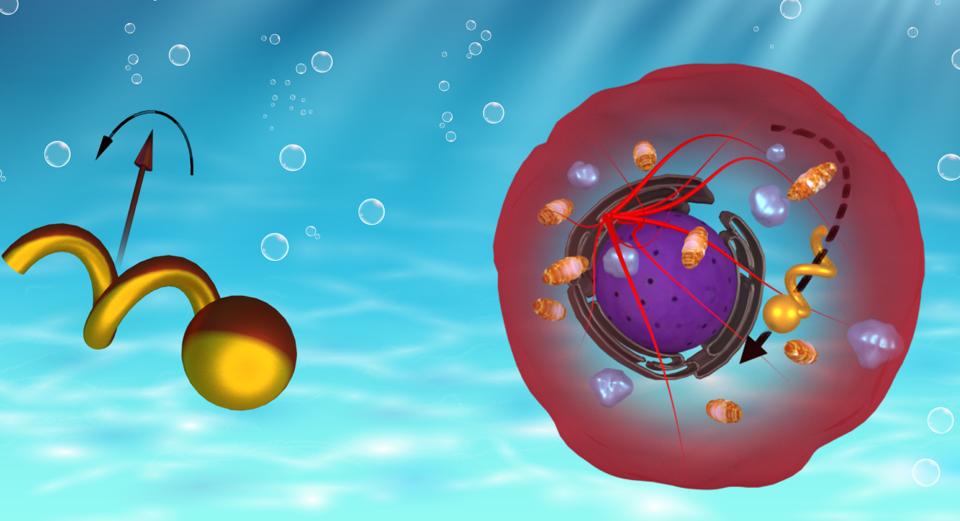Nanorobots developed at IISC Bangalore hold promise for cancer treatment

Researchers at Indian Institute of Science Bangalore have developed a method of using nanorobots to deliver payloads to specific parts of a living cell–a breakthrough that could transform cancer treatment.
“We can now very precisely move it from point A and B, that too inside a living cell,” Malay Pal, a co-author of the paper published in the journal Advanced Materials, said.
The breakthrough for the Bangalore team is the use of rotating magnetic fields to guide the probes instead of using more conventional tools such as ultrasound or chemicals.
The nanorobots are helical in shape, about 200 nm thick and 3 microns long. The structure is made of silica with a slim layer of magnetic material that allows the nanorobot to be guided.
Since nanorobots do not require a strong magnetic field, the rotating magnetic field used is weak and does not interfere with the working of cells. “The magnetic field used to guide the nanorobots does not harm the cells, it is nearly non-invasive,” Pal said.
For chemotherapy to treat cancers, cancerous cells are identified using ultraviolet radiation, after which the probes are used to deliver drugs without impinging on healthy cells.
Other applications of such a technology include gene silencing, real-time mapping of the cellular environment and investigating its response to local stress.
However, the mechanism for injecting and guiding the robots in humans is far from clear. “We have done a lot of work, but more work needs to be done,” Pal said. At the moment the probes are tested in cells under a specially designed microscope with a triaxial Helmholtz coil inside to generate the magnetic field.
To treat humans, a kind of MRI machine will have to be developed. But before that, the researchers will have to find ways of safely injecting, imaging and tracking the probes in humans.
The group is now conducting trials in rats. The nanorobots are being injected directly using a microsyringe, but the team has not been able to image them properly when they are inside deep body tissue. To do this, they are developing a new type of microscope that Pal hopes will be ready in two years.
[“source=hindustantimes”]


